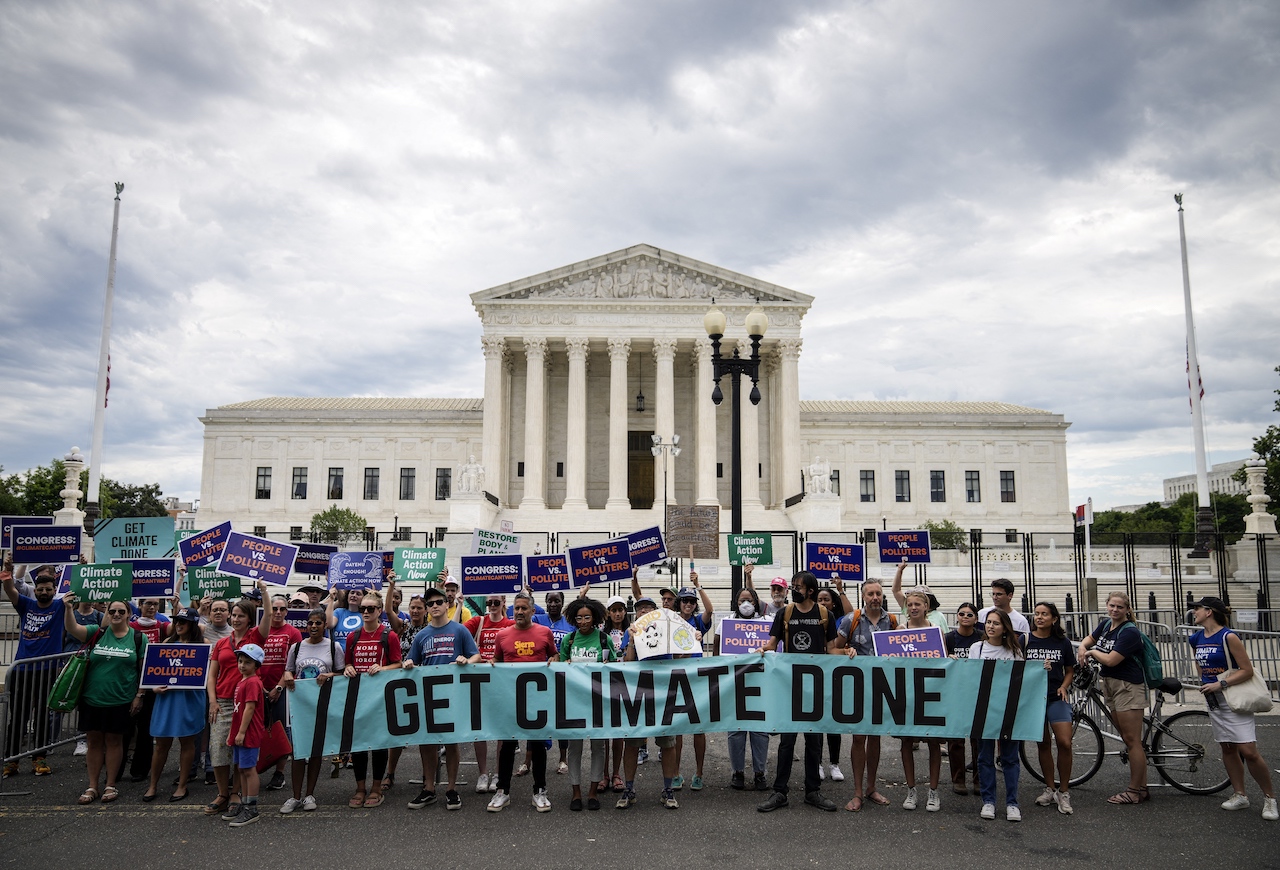The Supreme Court decision to limit the ability of the Environmental Protection Agency to fight climate change has delivered a huge blow to US climate action. Leading investors share their views on its implications

In brief
- The US Supreme Court (SCOTUS) has ruled to limit the EPA’s ability to force through energy transition in power generation, the second largest source of US greenhouse gas emissions
- This will create a climate of uncertainty for investors, not least as the tug of war between climate change deniers and environmental campaigners moves to other regulatory fields
- It also is a major blow to President Biden’s credibility as a leader on energy transition on the international stage. Responsible investors may have to help fill the void
The conservative majority in the US Supreme Court continues to flex its muscles. First the reversal of women’s abortion rights, then a rolling back of secularism in schools, and finally, last week, a limitation on the US policy fighting climate change. All three decisions were the same six strong conservative block, boosted by Trump appointments, outvoting the three liberal judges.
The new ruling specifically limits the ability of the Environmental Protection Agency (EPA) to address climate change, and puts the final nail in the coffin of the EPA’s Clean Power Plan. This had been introduced by President Obama to accelerate the US transition away from coal and natural gas power plants toward renewable energy sources.
It played a role in the substantial reduction in US emissions of greenhouse gases (GHGs) that has taken place in recent years. It is estimated in 2010 the US emitted 5.68bn tonnes of GHGs. By 2020 this had fallen to 4.71 bn, as the country ceded first place in the pollution stakes to China. The US now emits less than half of China’s level (10.67bn).
Reaction was swift. In a statement President Biden called the ruling “another devastating decision that aims to take our country backwards”. While Greg Hershman, head of US policy at the UN-supported Principles for Responsible Investment tweeted “the ‘radical climate agenda’ is refusing to let society act on as-close-to-incontrovertible scientific evidence as humanly possible that we are careening toward ecological, economic and social disaster”.
Impact on investors
Investors have joined in the condemnation of this controversial decision. Georgie Thomas, head of ESG at Cibus Funds, told Impact Investor: “It is a great shame to see how…the bipartisan veil, which shadows the US, has influenced the decision. It is clear that within the Supreme Court, despite their understanding of implications of climate change, their political agenda takes precedent.”
The impact on investors may vary according to time frame. Elliot Hentov, head of macro policy research at State Street Global Advisors, comments: “In the near term, SCOTUS supports a restrictive view of executive regulatory action, which lowers potential costs of environmental regulation. The interpretation that certain emissions rules require legislation de facto means these rules will not be enforced in the years to come. However, in the longer term, the climate emergency means that other means will be found to curb emissions, via carbon taxes or through private sector market pressure.”
Uncertainty would seem to be the order of the day. Dr Matthew Bell, EY’s global climate change and sustainability services leader, laments: “Investors like to have regulatory certainty, and have long been calling for a more unified and ‘less choppy’ political landscape on climate change. However, the changes from the Supreme Court still leave a number of avenues for the Federal Government to pursue, via the EPA, to achieve a similar outcome. It’s hard to see that there will be a longer-term value uplift in emissions-intensive energy assets because of it.”
A work around?
Those other “avenues” may provide uncertainty, but they may also offer a way out of this restriction. Fortunately, as Hentov observes “very few judicial rulings are full and comprehensive, meaning work arounds typically exist”, adding that “the limited scope of the ruling also means that other emissions-lowering rules remain in place”.
Bell agrees: “My understanding is that there are a number of other routes that can directly or indirectly lead to emissions reductions. For example, the Clean Air Act initiated in order to limit pollutants like sulphur dioxide, nitrogen oxide, and particulate matter. These, if regulated further, would likely impact thermal coal energy assets most of all.”
However, Hentov cautions: “In practice, work arounds require political capital so the question is not whether other regulatory levers could substitute – they certainly can – but whether government enjoys enough political support to do so. This is not the case today.”
Perhaps investors can play a role here. Julie Gorte, senior vice president of sustainable investing at Impax Asset Management, comments the decision “increases the importance of our policy work, including with state governments, which have proven to be more adept at regulating GHG emissions through mechanisms like the Regional Greenhous Gas Initiative”.
Leading by example?
Perhaps the more worrying question is whether the decision will have other knock-on effects on the US’s international leadership on environmental issues. As Georgie Thomas says “it is terrifying to see such a powerful, influential nation take this stance”.
Bell reflects: “Will it affect the US’s credibility in leading the fight against climate change? It doesn’t help. Biden had a strong political platform on acting on climate change, and in the lead up to COP27 in Egypt, the administration would like, I am sure, to come with a strong domestic plan.” That is not going to happen now.
Hentov warns there are some very practical implications. “Much of international climate change coordination is conducted via treaties – which require congressional approval – and otherwise through regulatory commitment. The knowledge that SCOTUS may counter any regulatory commitment undermines the US credibility that it could deliver on any promises made regarding global treaties.”
Should investors fill this void? Impax’s Gorte says: “Investor action is already happening, but the signals are not yet sufficient to put the world on a pathway to observing the Paris targets.” Regarding the Supreme Court decision he believes “this is an unfortunate interpretation of the statutory authority of any Federal agency, particularly at a time when it is essential that the world move to limit greenhouse gas (GHG) emissions swiftly and significantly to avoid a climate catastrophe. This decision redoubles the need for investors to act on emissions reduction and climate solutions”.





